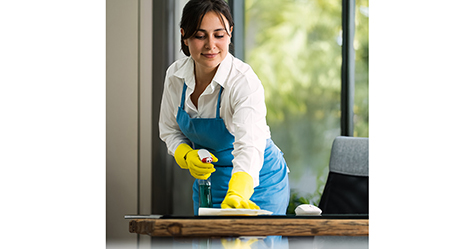UV Light Disinfection Is Effective Yet Challenging
Discover the pros and cons of UVC systems
Although ultraviolet (UV) light disinfection technology has been around for a while, it is seeing a surge of popularity especially in light of the coronavirus pandemic. UV disinfection is very effective, but only if it is used properly. Infection Control Today points to the benefits of UV disinfection as well as the challenges in using it correctly.
Ultraviolet germicidal irradiation (UVGI) is a type of UV light that is composed of three types of light—UVA, UVB, and UVC. UVC is the most effective and was first used in the early 19th century as a method to disinfect air. Its use fell out of favor until an increase in tuberculosis infections in the 1980s led to renewed interest.
There are three methods of applying UVC systems: upper-air, coil irradiation, and airstream disinfection. Upper-air systems are typically installed in health care facility spaces—such as above patient beds, in waiting rooms, corridors, and break areas—where they kill airborne microorganisms. Coil irradiation and airstream disinfection systems are installed within air handling units or HVAC systems.
In healthcare facilities, UVC is generally used to disinfect surfaces more than air or water. The wavelength of light breaks down microorganisms by naturally damaging their DNA and RNA, rendering them unable to replicate. However, using UVC radiation to disinfect is not simple and requires multiple protocols to use safely.
The radiation must be contained in a device, such as a light box, robot, or tower. People must be cleared from the room before the device is turned on because it can be harmful to eyes and skin. Sometimes the devices need to be repositioned to eliminate “shadowing,” which blocks the UV light from touching the surface intended for disinfection. As all areas need to be free of any soil in order for the UV light to touch the surface, UV disinfection does not replace cleaning.
Installing permanent UVC lights or determining the placement of mobile devices is also a complicated process. Systems can be very costly, limiting the ability of some facilities to afford this disinfection option.
Learn best practices for using UV lights to stop the spread of health care-acquired infections in facilities.

